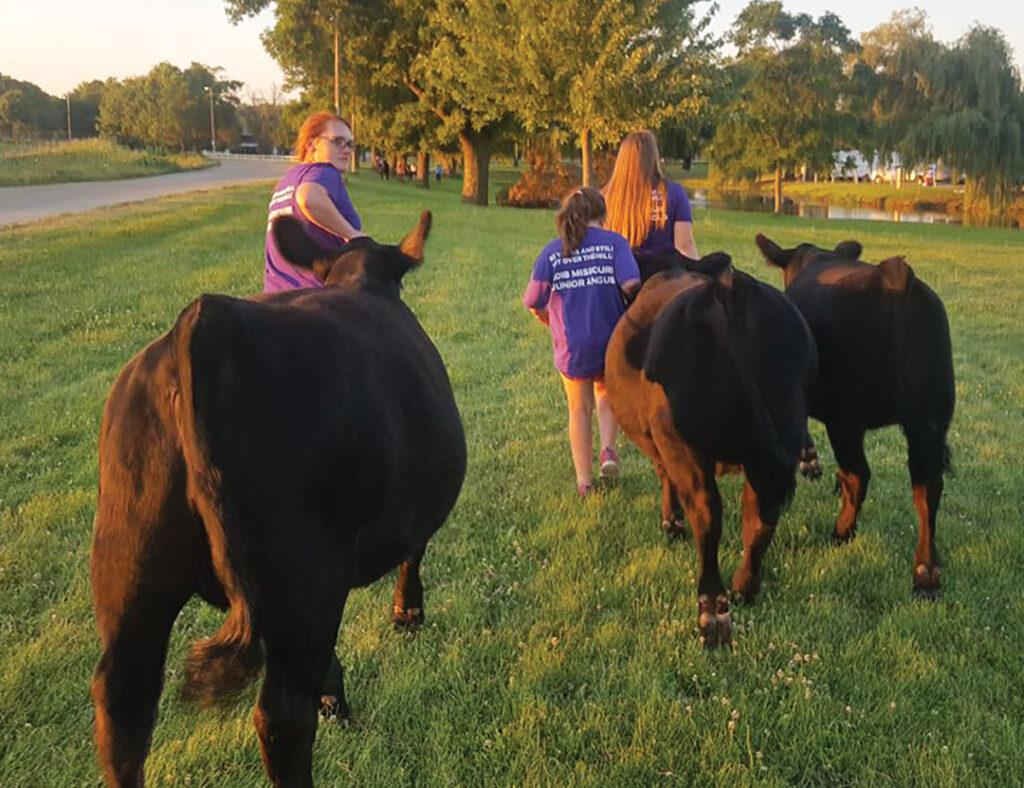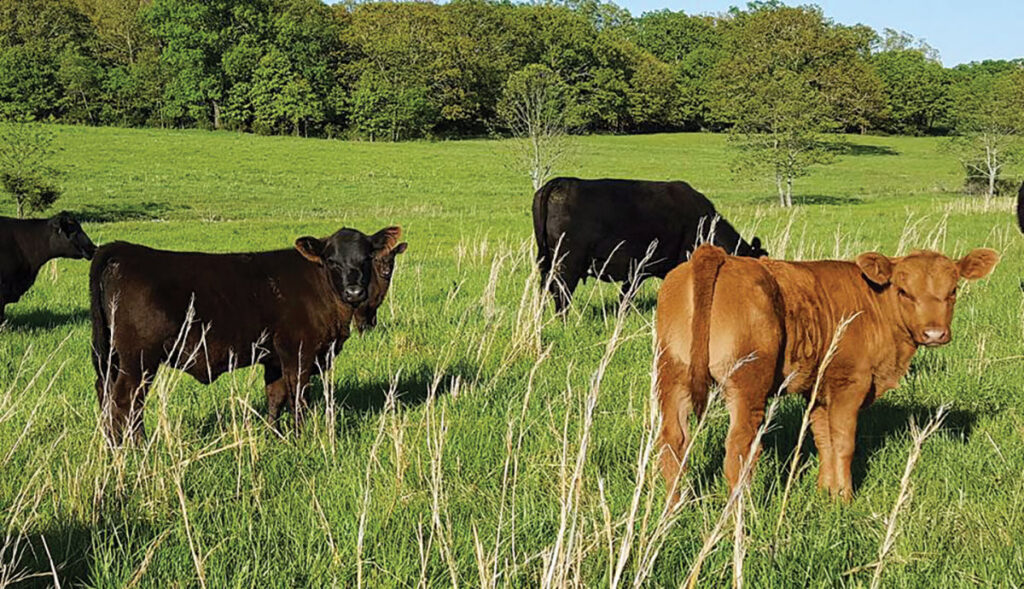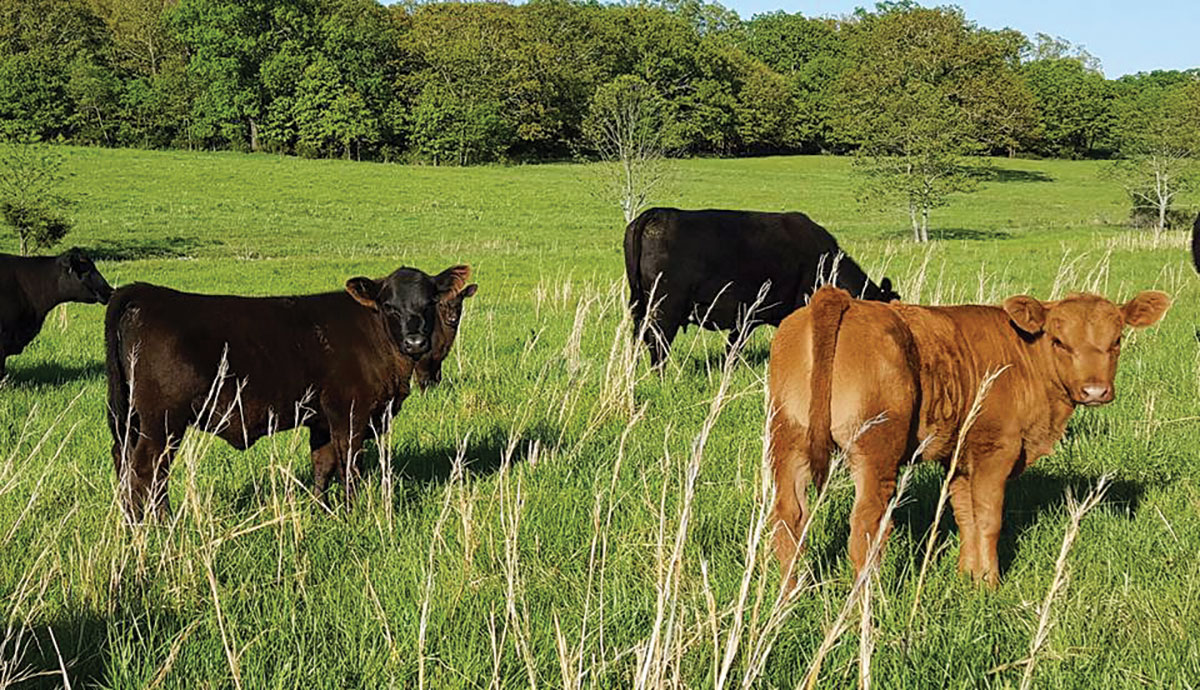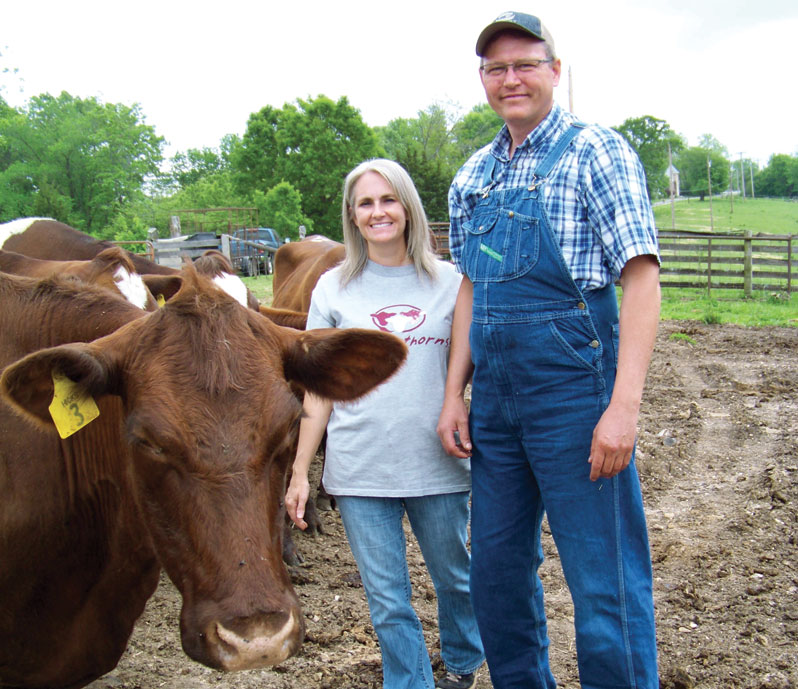
Sinning Cattle Company breeds cattle that go from the show ring to the pasture
MANSFIELD, MO. – A Brangus heifer sparked something in Chris Sinning.
That heifer sparked the desire to raise show-quality cattle and heavily-maternal stock for life on the farm.
“It was late before I got into showing; I didn’t start showing cattle until 1991,” Chris said. “My cousin got a Brangus heifer given to him through Brangus for Kids, and I bought a heifer. That got me into showing and getting more into cows.”
Chris grew up on a small farm, and his wife Amber grew up on a dairy farm, so they were familiar with cattle, but they took their operation in a new direction.
Chris, Amber and their daughters – Holly, Emily and Addy – live near Mansfield, Mo. They currently have about 65 to 70 mature cows and bull and heifer groups, with synchronized breeding in the spring and fall. Chris is also an agriculture education instructor and FFA Advisor at Norwood High School.
They started their operation with Angus, breeding and developing registered show animals and seed stock, but began adding Simmental genetics about a decade ago.
“We are still running 50, 60 percent Angus, but we’ve diversified and added Simmental,” Chris said. “We really like where that’s headed. It gives our customers a different option, and we think they hold up better.
“We think there are more opportunities and noticed our SimAngus cows are a little smaller, not the robust frame size we’ve seen with the Angus; we think they make better cows. My great uncle AI’ed for decades, and his favorite cow was always the Simmental/Angus cross; the best of the two breeds. They blend in well with the Angus and are just a little more improved in some areas, and we are pleasantly surprised.”
They have also added a little Red Angus to the operation by purchasing a heifer.
“It gives another avenue,” Chris said. “Everyone has a lot of Angus for sale, and it’s hard to be different in that market; there’s a lot of good Angus in the country.”
They might like animals with a little flash in the show ring, but the Sinnings also want females that go on to be productive cows.
“I tell the girls that if a heifer won’t make a cow, we aren’t going to keep them,” Chris said. “Sometimes our cattle get a little slicker haired, and that’s fine in the real world. People tell us they won’t make cows; well, they have.”
Chris added they have their fair share of “Connealy genetics,” a Nebraska-based Angus herd heavily culled for productivity traits under rugged conditions.
“If we can find a show animal that goes back to some of those Connealy lines, we might not win the big ones, but we trust those cows,” Chris said.
He added show cattle need a sound structure, good feet and legs, and the phenotypic traits necessary for a quality production animal.
“In the show ring, you bring in a senior yearling, and she has a terrible udder; she’s not going to do well,” Chris said. “I think, fundamentally, it will still keep you need to be, and we’re excited about the Angus [Association’s] new phenotype/genotype show. It just started three or four years ago, so with our youngest daughter, we might give it a try. We can take cattle into that and mix our show line with the production side.”

Chris does not emphasize EPDs, instead working to find the right balance.
“We want that bull that has that show bull look and that real-world appeal,” Chris said. “I’m pretty bad to go back and look at pedigrees, then at production animals that make a living.”
Part of that real-world appeal the Sinnings breed for are cattle that do well with limited inputs. Cattle are pasture-based and not heavily fed. The emphasis, however, is put on the farm’s mineral program.
“We use a mineral with capsaicin and garlic,” Chris explained. “It’s just tremendous what it does for the health of the cows. You can see the change in six weeks. We don’t do anything special but try to feed like the commercial guys will. We used to do a lot of lick tubs but have phased that out. We feed a lot of cake, which is cubes. I believe we feed what the cows need and don’t try to guess. We also don’t run a high stocking rate, and I think the quality of the cattle has responded to that as well.”
The Sinnings have developed a client base for their stock with private treaty sales and participation in association sales.
“Our bulls are holding up for customers; we’re getting good reports on them. Most of our bulls are going to be more versatile bulls. We may try a bull that is more on the show side, but I get more excited when the females look good. We try to balance things. We take those outstanding Connealy-bred bulls and make show heifers. There’s only one person who is going to win that purple, and we want to do it, and we want our customers to do it, but at the end of the day, if a kid buys a heifer and it makes a great cow, that’s what we focus on. That’s what we want to see. We’ve bought highly show-bred heifers, but they didn’t work.”
Through AI, the family can select individual parings to breed the best calves possible, and ET work is a project for the future.
“We know we need to do, but the good Lord has always provided us enough heifers for three girls,” Chris said. “It’s in the cards, but we just haven’t had a need to. Maybe, before we go to flushing, I’m asking myself if this is really a cow that sets the program where it needs to be. If we can take the SimAnugs and what’s working for us and have that happen for people when we sell them animals, then we are winning the game.”
While the herd is focused on producing cattle that will deliver quality genetics for years, Chris said there may be a different line in the future.
“For the youngest daughter [Addy], we’ve been putting in four or five straws of Maine-Anjou semen and experimenting with that.”
They processed a steer recently from that Maine-Anjou/Angus cross and were highly pleased with the carcass quality.
“Unofficially, he would probably be low Prime,” Chris said. “We were looking at them for show cattle, but the production can be there with those lines, but our biggest goal is being maternally orientated.”







